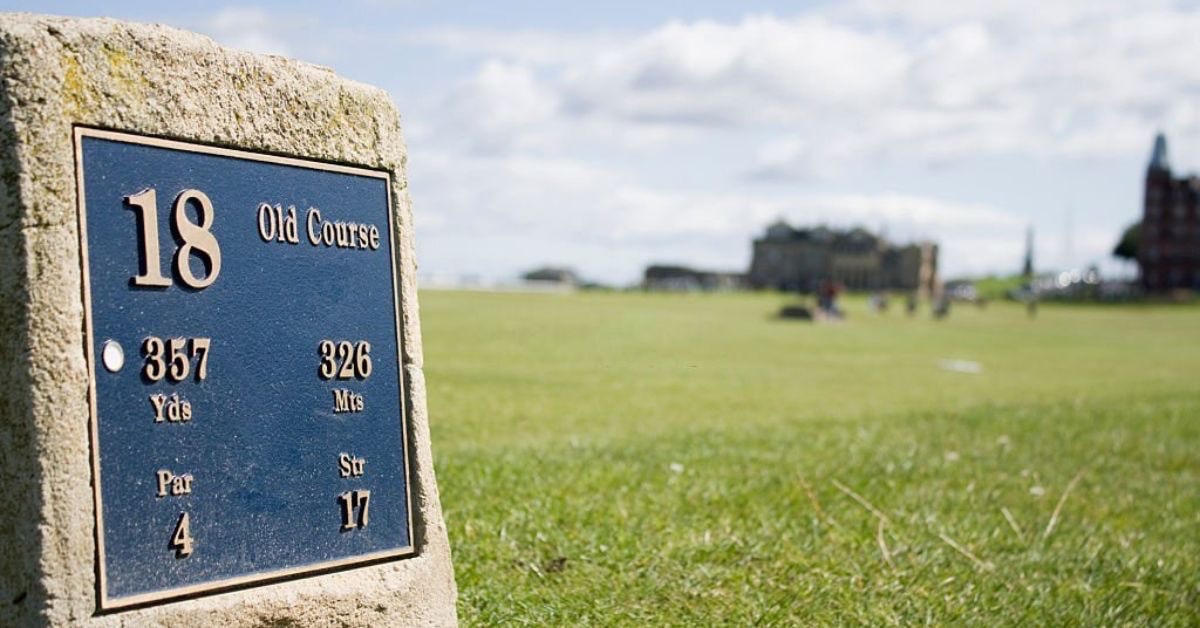The word par holds great meaning in golf. The term itself originates from the Latin word par — meaning ‘equal’ — and is used to define a target score on the golf course.
But, what is par on a golf course?
In this article, you’ll learn what par means in relation to individual holes and the overall golf course. Also, you’ll discover the factors that determine par, and who sets it.
Ready? Let’s begin!
What Is Par on a Golf Course?
Par on a golf course is the expected number of strokes that a zero handicap golfer should take to complete every hole. It’s the sum of the pars of all individual holes on the course. Par for 18 holes is usually 72, but it can range from 68 to 73.

What Is Par in Golf?
In golf, par is the predetermined number of strokes that a scratch golfer (of zero handicap) should require to complete the hole, a round, or a tournament.
The game of golf relies on a handicap system. Essentially, its purpose is to level the playing field so golfers can compete fairly against those of different skill levels.
A handicap is a number that measures a golfer’s average score in relation to par.
For instance, if a golfer has a handicap of 12, they will typically score a round of 12 over par. Therefore, they will be afforded 12 shots when playing against a scratch golfer.
In 2020, the World Handicap System was introduced to unify the various systems used at golf courses around the world. Today, there are 123 countries using the system.
Where Does the Word Par Originate From?
The word par was first used in golf ahead of The Open Championship in 1870, when golf writer A.H. Doleman used it to describe “perfect play” for the round — a score of 49 in twelve holes. Officially, the term entered the golf lexicon in 1911 through the USGA.
In fact, the word itself derives from a stock exchange term that a stock may be above or below its normal, or par figure. Looking back further, it originates from the Latin word par — meaning “equal,” according to the Online Etymology Dictionary.

How Is Par Determined on a Golf Course?
Par is primarily determined by the playing length of each hole from the tee box to the putting green. However, the difficulty of the hole is also taken into consideration.
According to the United States Golf Association:
“Par reflects the score a scratch player is expected to score on a given hole and may be allocated depending on the playing difficulty of the hole, including any effective length correction factors, for example, elevation changes, forced lay-ups, and prevalent wind.”
USGA
Essentially, par is determined by two factors:
- Length: The overall distance of each hole, from tee to green.
- Difficulty: Any elevation changes, forced lay-ups, wind conditions, etc.
Let’s take a look at each in some more detail.
Length
The primary factor to consider when determining the par of a hole is the length.
According to the USGA, it is recommended that the par score is established for each hole according to the following lengths:
| Par | Men | Women |
|---|---|---|
| 3 | Up to 260 yards (240 meters) | Up to 220 yards (200 meters) |
| 4 | 240 to 490 yards (220 to 450 meters) | 200 to 420 yards (180 to 380 meters) |
| 5 | 450 to 710 yards (410 to 650 meters) | 370 to 600 yards (340 to 550 meters) |
| 6 | 670 yards and up (610 meters and up) | 570 yards and up (520 meters and up) |
Typically, a golf course will feature four par 3s, ten par 4s, and four par 5s. However, despite being the most common par score, not all golf courses are par 72.
As a rule of thumb, shorter golf courses have lower par scores. For instance, Royal St. Davids is a par 69 course that measures a total distance of just 6,500 yards.
On the other hand, longer golf courses have higher par scores. A prime example is Streamsong Black: a par 73 that measures a whopping 7,400 from the back tees.
Difficulty
The second factor to consider when determining par is the difficulty of the hole.
You might have spotted that there is an overlap between the distance ranges in the table above. Essentially, where a hole length falls within two ranges, the difficulty of the hole becomes the deciding factor on the par score for the hole.
Altitude, terrain, wind direction, and on-course obstacles such as water hazards, trees, bunkers, mounds, and even buildings can be taken into consideration when creating the golf course par.
This ensures the par figure is set as fairly as possible, without relying solely on distance.
Another factor to consider is the size of the greens. Larger greens make approach shots easier, which decreases the difficulty of the hole.
So, who determines the par score on a golf course? Read on to find out!

Who Sets the Par on a Golf Course?
Usually, the par score on a golf course is determined by the developer and the golf course architect during the design and planning phase of the project.
During the design phase, the course architect will assemble a layout of 18 holes comprised of approximately four par 3s, ten par 4s, and four par 5s.
However, it costs a lot to build a golf course, and the allocation of the par score for each hole can vary depending on factors such as site and budget constraints.
For example, the development company overseeing the project might opt for a par 70 course rather than a par 72 — with an extra par 3 and one less par 5. This will cost less to build while taking up less acreage on the golf course.
Then, it’s the role of the course architect to determine how the design of the course will impact the difficulty level. This can also happen retrospectively, in cases where the par score is excessively challenging and unattainable.
Ultimately, the par score is set by the developer and the course architect depending on a number of variables, in accordance with the guidelines set by the USGA.

Conclusion
In summary, par is the predetermined number of strokes that a scratch golfer (of zero handicap) should require to complete the hole, a round, or a tournament.
Par is primarily determined by the playing length of each hole from the tee box to the putting green. However, the difficulty of the hole is also taken into consideration.
Therefore, the par score on an 18-hole golf course can range anywhere from 68 to 73, depending on the length and difficulty of the course.


